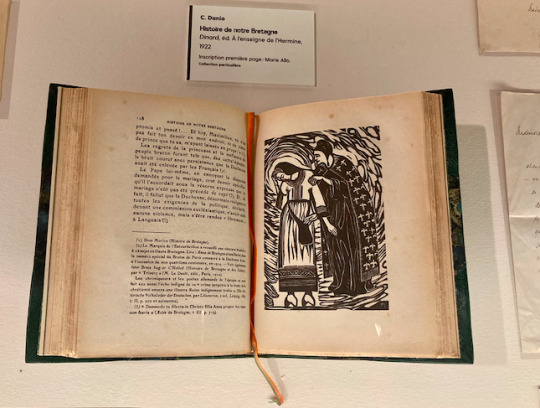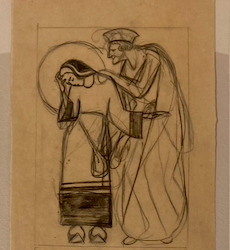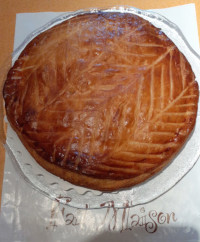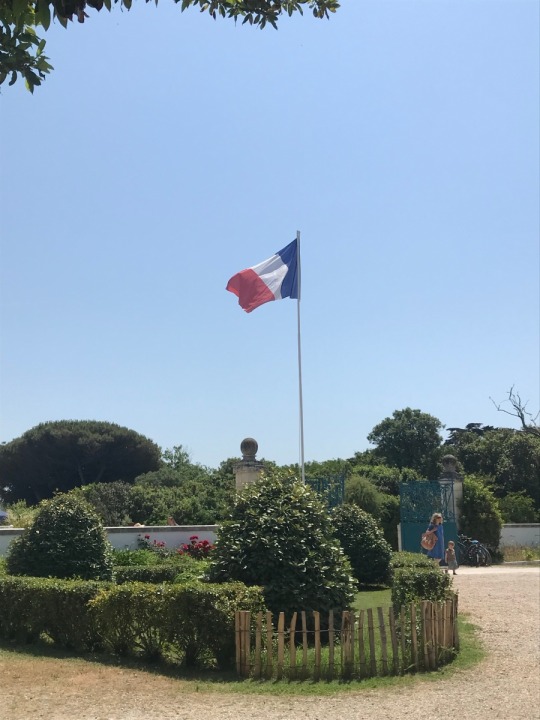#armorique
Text



Triptyques bretons : Huelgoat
#france#bretagne#breizh#bzh#visitbretagne#finistere#huelgoat#forêt#forest#montsdarree#fougères#fern#granite#armorique
24 notes
·
View notes
Video
Bugale Breizh by Oric1
Via Flickr:
2017 - Guingamp - Bretagne - France
#Bugale#Breizh#22#Canon#Côtes d'Armor#France#Guingamp#Oric1#armorique#bretagne#brittany#costumes#danse#eos#folklore#Bugale Breizh#fille#enfant#girl#child#Jean-Luc MOLLE#coiffes#dentelle
0 notes
Text
Cold winter: Asterix and Obelix
ASTERIX AND OBELIX
Category: French media
We are in the year 50 BCE. The Roman Empire conquered all of Gaul… All of it? No! One small village forever resists against the invader!
This is the opening line of most of the stories of “Asterix”, a bande-dessinée (Franco-Belgian comic book) that was created in 1959 by René Goscinny and Albert Uderzo. This series, and the wider franchise it spawned under the name “Asterix and Obelix”, is recognized today as one of THE most famous French BD of all time, as well as one of the most famous pieces of modern French media worldwide. The series is still going on today, having survived the death of its two “fathers”, with a total of 39 volumes to this date (when it comes to BD, the “issues” are called “volumes” since they’re quite bigger than a normal American comic-book issue, and usually have self-contained stories). The series gave birth to both animated movies (10 to this day) and live-action movies (5 to this day), and that’s without counting all the various games. Translated in 111 different languages, it is currently the second most-sold comic book in the world, right behind “One Piece”.
But maybe you still haven’t heard of it? In which case, this post is here to introduce you to this world…
As I said before, the story of “Asterix” takes place in a small village of Armorique (the ancient name of today’s Bretagne), in a Rome-conquered Gaul: this village is the last independent Gaul village, constantly resisting the various attack of the Roman soldiers thanks to one wonderful trick – a magical potion brewed by the village’s druid, Panoramix, which grants whoever drinks it a temporary inhuman strength. It is thanks to this wonderful brew that the village could crush all the Roman legions sent to destroy them, and it is in this setting that we follow Asterix, one of the village’s warriors. He is quite small – very small, in fact, but he makes it up in both great bravery and cleverness. Mind you he still isn’t perfect, as the authors of the BD wanted an anti-hero: he is not so much intelligent than cunning, and if he is good-hearted, he still has a tendency towards grumpiness, grudge-holding and/or being easily annoyed. And whenever he needs to have some strength, all he needs is a gulp of the magical potion to be able to lift heavy rocks and run like the wind… Asterix’s best friend, and the co-protagonist of this story, is Obelix, who is the complete opposite of Asterix: very tall, very large (it’s all fat, but he HATES being called fat and will openly deny it before punching anyone in the face for “insulting” him), and quite slow-minded. Though he is usually much more good-natured than Asterix - for example while he is always ready to punch people away in the sky, for him it is just a “game” or his duty as a warrior, nothing personal. When he was a baby he fell into the cauldron of magical potion – which resulted in him having a permanent super-strength (it is a running gag that he still tries to have a drink of the potion whenever it is distributed, despite the druid insisting that he does not need it and will not have more). In his everyday life it helped him for his job, as he is a menhir deliveryman; but it also comes with an enormous appetite, that can only be satisfied by several boars at each meal. The third part of the trio is Idefix, Obelix’s small white dog, who tags along with the heroes in all of their adventures.
And when it comes to their adventures, the trio usually has two kinds. One is “local” adventures about helping or defending their village, either from internal problems (the druid needing an ingredient, political rivalries among the chief’s men, etc…) or from the numerous plots organized by the Romans (and by their leader, Julius Caesar) to crush this thorn in their side that is the village. The second kind is “foreign” adventures where the protagonist will be sent or called far-away into other ancient civilizations (Cleopatra’s Egypt, the Iberian Hispania, the Belgian Germanic tribes, the old Indus) to provide their help there – they event discovered America before anyone else, in volume 22.
The Asterix and Obelix franchise is an humoristic series. This is present in the very name of the characters: “Asterix” has to be heard as “astérique”, French for “asterisk” ; “Obelix” is of course “obelisk” ; Idefix is to be heard as “idée fixe” (an obsession), while “Panoramix” is for “panoramic”. Each name in the Asterix BD (unless it is of those of historical characters) is a pun. EACH OF THEM. They are all phonetic puns, with just the suffix changing depending on the culture (Gaul has -ix ; Rome has -us ; Goths have -ic ; Egyptians have -is ; Iberians have -on, etc etc…) ; and as a result our Gauls have to fight Roman enemies going by name such as “Infarctus” or “Garovirus” (gare au virus, beware the virus). But the humor of the “Asterix” series is actually a double-level humor, for you see the “Asterix and Obelix” franchise is for both children and adults. As a result you have a first level of humor aimed at a younger audience: cartoony violence, simple but efficient running gags, puns everywhere… And on the other side, there is a much more adult humor clearly present in the pages. Not “adult” as in “sex and violence” of course, but for example many characters that appear in the series are actually caricatures of real-life figures, ranging from politicians to singers and actors. The French Wikipedia even has an entire article dedicated to listing all of the people caricatured by “Asterix”. The series also deliberately plays on a series of goofy anachronism to introduce modern-day situations into the ancient world of Gaul and Rome (for example the children of the village have an open-air school taught by Panoramix eerily similar to 20th century classes ; and most of the depictions of the “foreign” cultures rely heavily on the stereotypes, clichés and jokes usually attributed to their modern-day descendants – for example you’ll recognize in the old Iberians of Hispania caricatures of today’s Spanish people, the Goths are obviously Germans, and the ancient tribe of the Helvets is in all-but-name Switzerland) ; but at the same time it also makes several historical jokes and nods that only people who know their history lessons will get.
This duality in humor results in the BD’s huge inter-generational success: usually a kid buys a volume and reads at a part of it, then becomes an adult and re-reads it, laughing at different parts, and then transmits it to their kid, and the cycle goes on…
- - - - - - -
But let’s briefly talk about history in “Asterix and Obelix”… Because the BD series is half-historical: the authors clearly knew their topic when talking about the ancient world, and did their research when tackling new subject (in fact it was precisely because of this knowledge that they could make their jokes). But at the same time, they also took numerous liberties and used anachronism either for the sake of jokes (again, by having modern-day structures and problems being thrown in ancient world equivalents, example the menhir deliveryman job of Obelix), or to simplify things for children who would read the story (as a result, Julius Caesar from a real-life “imperator”, becomes here the “emperor” of the Romans). It also doesn’t help that the depiction of the Gaul and other ancient civilizations relies in numerous clichés, stereotypes and false beliefs that were widespread and “common knowledge” in the 19th and 20th century. For example, the idea that the Gauls were the ancestors of French people. It was a recurring topic that was reused and popularized by this BD, the idea that Gaul “evolved” into France, when in truth the real “ancestors” of France are mostly the Romans themselves, who erased almost all of the culture of Gaul through Romanization and inclusion in the Empire, before new Germanic tribes (such as the Franks) came in after the fall of the Empire and founded the “France” we have today.
But this tackling of historical subjects actually led to the series being scrutinized by many people… You see, as I said the series was HUGELY successful, and very influential among French youth. Many kids learned things about Gaul and its inhabitants throughout this series (with all the inaccuracies cited above), and this series was part of a renewal of interesting for ancient Gaul. But many historians accused the comics of having an anti-Ancient Rome agenda. Because you have to understand that in the 50s/60s, somebody actually placing the idolized and adored Roman Empire as the antagonist of a story, and rather have as heroes the “barbarians” and backwards Gaulish tribes presented as the “ancestors of the French”… It was groundbreaking. It was entirely flipping the table on how history was seen and perceived. And it led to a HUGE debate by historians over this franchise.
There was also another huge debate around it – but political this time. Being one of the faces of French culture and media, and depicting a small heroic tribe of “France’s ancestors” against a powerful invader dominating the country… Let’s say that both sides of the political spectrum tried to seize Asterix to spread their own messages. An habit that irritated to no end Goscinny and Uderzo, who refused to have any political message in their work, and even ended up making an entire volume centered around the idea of two political factions divided Asterix’s village only for him to denounce all of their nonsense and stay firmly neutral.
18 notes
·
View notes
Photo




“Histoire de notre Bretagne" de C. Danio illustrée par "L'Union de la Bretagne à la France" et "L'Arrivée des Saints Bretons en Armorique" de Jeanne Malivel (1920-22) à l'exposition “Jeanne Malivel (1895-1926), une Artiste Engagée” de la Bibliothèque Forney, Paris, avril 2023.
4 notes
·
View notes
Text
Kati Horna. Una húngara en la trinchera.

Ella solía decir: "Me hice fotógrafa en París y fotorreportera en España". Nació en Budapest en el seno de una familia burguesa y su niñez coincidió con la caída del Imperio Austrohúngaro. Frecuentó el Corona Café, donde oficiaba el pensador Lajos Kassak, que le recomendó que marchase a Berlín, a la Bauhaus. Regresó a Budapest para estudiar fotografía (su madre le compró una Rolleiflex) con József Pésci durante un curso de verano; debió intimar con Endre Friedmann. Richard Whelan, biógrafo del gran corresponsal de guerra, define a Kati Horna como "una mujer guapísima, rebelde y una de las amigas más íntimas del fotógrafo". En 1933 le tomó un elegante retrato a Capa que es una de sus primeras fotos. Se marchó a París, "alquiló una habitación en rue de LArmorique y buscó trabajo". La contrataron en la Agence Photo y en noviembre de ese mismo año firmó su primer reportaje sobre El Mercado de las Pulgas,
#Kati Horna. Una húngara en la trinchera.#¿Esta es la imagen y algunos datos (O no) la “Historia” la pones tú? ¡La tuya! ¿Lo harás...?
3 notes
·
View notes
Text

Quatre heures du soir. Un dimanche d'automne. Sous le ciel toujours gris du doux pays d'Armor, la petite cloche de Saint-Urvien, dans son église séculaire, fait tinter tristement sa voix mélancolique. C'est la fin des vêpres. Tel un essaim d'abeilles blanches au sortir de la ruche, les coiffes blanches et rustiques des Bretonnes s'égrènent, à l'issu du divin office, par le dédale des paisibles et vieilles ruelles, que même le chant du coq ne trouble plus. Le soleil attiedi des pâles journées de septembre, accroché aux cimes grises des petites montagnes d'Arrée, et comme épris des sites qu'il empourpre, semble fuir à regret la terre des Cornouailles et veut offrir son or au pays des dolmens. Une grande route traverse Saint-Urvien: la route nationale. Escortée de vieux chênes, ses sûrs confidents, elle serpente d'abord au flanc de la colline pour aller rejoindre ensuite, au fond du vallon, le ruisseau poissonneux du Dourgwes, dont elle restera désormais la voisine. D'innombrables petits sentiers mystérieux et sombres, viennent en cachette, sous les aubépines, se greffer à cette unique artère. De là, serpentant aux pieds des roches granitiques, ils s'en vont rôder autour des vieilles fermes pour aboutir enfin aux "doués", les lavoirs du pays breton. Dès ce moment, et non sans grâce, ils s'offrent aux caprices enfantins des cascades minuscules à peine perceptibles, comme il y en a tant en Bretagne, au-dessous des fontaines à la voix cristalline. Tout est secret, tout est mystère, dans ce coin silencieux de la vieille Armorique. Le charme triste qui s'en dégage retient, malgré lui, le voyageur attardé.
RANÇON D'AMOUR par Pierre ARMEL, Le Petit Livre n.79, J.Ferenczy Editeur, 1913
#frenchpulp #RomanPopulaire #fascicules
#pulp #illustration #1910's
2 notes
·
View notes
Text
Soaring Demand for Pet-Friendly Ferry Travel
New Post has been published on https://petn.ws/cCZEe
Soaring Demand for Pet-Friendly Ferry Travel
Brittany Ferries has introduced pet-friendly cabins for the first time on its ferry Armorique, which has restarted the twice-weekly Cork Harbour-Roscoff service. There are 18 ‘pet-friendly’ cabins which, the company says, have been introduced to “significantly enhance capacity for passengers travelling with their beloved pets.” They even have ‘convenient access’ to a dedicated pet promenade […]
See full article at https://petn.ws/cCZEe
#PetTravelNews
0 notes
Text

2018
_
IM031
Komoa
Couzou ep
Indigo Movement
Aujourd’hui est un commencemant,
Yann Le Roux dit Yaxx Le Moal de la maison Graldlon dit le disciple des Azalea, Roi de Plougrescant, molets d’acier, briseur de chaines, tourneur de roues, père des Breizhad ; Breur Gwen Le Roux, héritié Le Blevennec des terres Armoriques, protecteur des Korrigan, créteur d’Ankou ; fils Domi Le Roux & Genev Le Blevennec dit les coupeurs de cheveux, conquérents des Enez, nous presente son premier EP. Couzou.
L’ep commence sur Grin, ne cherchez pas à comprendre le nom, il n’y a rien à comprendre ; comme tout breton il peut facilement inventer des mots. Grin commence sur une intro aux ambiances venues des profondeurs – Pour ceux qui suive déjà un peu Komoa ou Yaxx, vous aurez compris qu’il est pas la pour vous faire sourir ou imager un monde fleuri – Cette ambiance, solidement annoncée par l’évolution filtrée d’un synth, vous annonce dès les premières mesures le groove énervé, en colère, qui va vous couler le long de la nuque pendant plusieurs minutes. Au lancement, ce groove d’introduction se transforme pour prendre place sur une énorme basse enveloppée par un jeu d’ambiance angoissant. Le tout tenu par un fil, grâce à la piste de hi-hat simple et intelligemment travaillée ; assez pour ne pas vous perdre.
Après quelques tours, une percussion venue d’ailleurs – oui, venue d’ailleurs, clairement – vient accentuer cette sensation d’inquiétude et de combat à la fois, quelque chose de menaçant est en cours. Ankou ?
Couzou, dont on taira l’origine, évitant un ainsi ce qui pourrait être vu comme un acte de trahison pour les Le Blevennec, commence sur une ambiance plus industrielle et rythmée par une loop de perc et une de hihat amplifiant la teinte industrielle. Au drop, surprise, changement d’ambiance avec un retour aux origines de Komoa, comme un retour de l’esprit de Ankou, ce truc mystique qui qualifi les productions Komoa… C’est reparti pour plonger dans les profondeurs. On apprécie particulièrement la sombre ambiance bretonne qui règne sur ce morceau. Non ?
La couche industrielle revient peu à peu et joue avec l’ambiance générale du son, accentuée par des nappes de synthé aérées qui montent petit à petit jusqu’a nous faire sortir de cette tempête.
Tooopeia, en collaboration avec Qant, un type assez tordu pour vivre à Paris et qu l’on avait rencontré sur Toulouse l’année dernière pour une soirée de l’équipe Egregore. Depuis il oeuvre pas mal avec eux et nous fait également profiter de ses talents de mastering, un homme à tout faire (et à suivre).
Pour Topeia il fait remonter Komoa des profondeurs pour ajouter des notes et mélodies moins… sombres, tout en gardant cette tonalité « meditate ». La production reste dans le même environnement que les deux premières, lent et envoûtant mais avec une touche de groove en plus grâce à la qualité du beat et l’ensemble de samples le ponctuant.
C’est sans hésiter une collaboration réussie pour Komoa & Qant qui, on vous le confirme, en privé, se sont bien trouvé en terme de mode de production et choix artistiques, un duo à suivre.
Pour finir on vous invite à écouter le Egregore Unighted 002 – Azalea x Sympa pour découvrir « Ker » de Komoa (oui, encore un mot inventé) et Tehran Paranoïa de South Pole Squad a.k.a Komoa & Qant.
Le mot du label :
Next up, debuting on IM, straight outta Toulouse, France, we welcome @komoa .The French have been killing it recently, and people like Komoa and Qant, are the best example. Yung Komoa joins the #indigoshuttle with 2 tracks, « Grin » and « Couzou », accompanied « by « Topeia », a collaboration with another member of the IM familia, Qant. Stompin’ subheavy sounds, these should be tested in every decent soundsystem. Get to know!
Mastered by Hebbe Veerstegh
Release Date: August 29th, 2018
Bandcamp
0 notes
Text
10 JANVIER 2024
Programme royal. Échauffement en cinq minutes : La galette ! Petit poème de longueur libre, avec uniquement des rimes au mot « galette ».

J’ai fait des emplettes !
Après la raclette
Et les côtelettes,
Une morbiflette,
Ou une bavette ?
Ou bien deux palettes
Et une omelette
(Merci, la poulette !) ?
Quelques gouttelettes
Dans la margoulette,
Une reniflette
Mais sans ciboulette !
Et puis… la galette !
1°) Petit croquis (fantasmé) sur le vif (5 lignes pour 5 minutes) : Le tatouage surprenant. Vous ferez la description très rapide, comme prise sur le vif, d’un tatouage aperçu dans la rue (ou ailleurs).
La fille débouchait du haut de la rue, et son visage m’intrigua tout de suite sans que je comprenne bien pourquoi. Elle avait tout le côté gauche tatoué, du menton à l’oreille, et autour de l’œil, et une partie du front.
Je n’ai pas osé la dévisager trop intensément, mais je me rappelle des arabesques façon gothique sur la pommette, l’oreille bien dégagée et complètement bleue, l’œil entouré d’une sorte de queue de dragon avec des écailles au-dessus du sourcil. Et cela donnait l’impression qu’une gueule d’animal fantastique la protégeait en surveillant les passants.
Je l’ai revue un quart d’heure plus tard, mais là, j’ai eu le temps de m’y préparer, et je me suis arrangé pour la croiser sur son flanc droit : un visage absolument lisse, pur, presque enfantin !
2°) La photo déchirée (10 minutes) : Reconstitution possible par l’écriture. Voici une photo argentique dont manque une partie, parce que la fin de la pellicule est arrivée sans prévenir. Il s’agit de décrire ce qui manque, compte tenu de ce qui reste visible, et d’expliquer la raison du photographe d’avoir voulu montrer cette scène dans son ensemble.

C’est mon frère qui a pris cette photo. C’était dans les derniers jours de nos vacances en Corse, au bord de la mer, à marée basse sur une plage très plate. On avait passé une partie de l’après-midi à grattouiller le sable humide, pour s’y rouler ou pour chercher des coquillages.
On était avec les parents, dans une sorte de guinguette banale, où l’on pouvait grignoter des plats locaux arrosés d’un vin rouge plutôt rugueux, à en croire les adultes.
Ce qui intéressait mon frère, c’était la fille du patron de la gargote. Une grande brune bien balancée et aguicheuse, qui prenait la pose en maillot de bain, juchée sur un des tabourets, en plein soleil, buvant des Orangina en attendant qu’un client lui commande une boisson quelconque, qu’elle apportait en se déhanchant.
Et comme il n’y avait pas beaucoup de clients – il faisait frais, la brume de mer arrivait – elle prenait de longues poses…
Le Kodak familial avait été mis de côté par mon père, sur ces mots : « C’est la fin de la pellicule, on fera tout développer en rentrant. »
Mon frère espérait qu’il restait – comme d’habitude – une vingt-cinquième pose possible, de quoi immortaliser cette nymphe qui lui avait tapé dans l’œil.
Mais c’était réellement la fin du rouleau ! Et il a mal visé, ou mal cadré. On voit juste un promeneur un peu flou, deux tabourets, mais pas le troisième avec la belle dessus.
Heureusement ! Je ne sais pas ce que les parents auraient dit s’ils avaient découvert cette inconnue…
3°) Gonflette (10 minutes) : Soufflez fort ! Voici une phrase tirée du roman de Dominique Sylvain, Panique en Armorique, 2023. Elle devra être gonflée, uniquement de l’intérieur, par addition de tout ce qu’on voudra. On aura le droit de couper le résultat final en plusieurs phrases, la seule interdiction est de déplacer des éléments originels ou d’en oublier. « L’ardoise annonçait en lettres blanches et soigneuses une blanquette de veau et un baba. »

L’hypothèse du commissaire fonctionnait à chaque enquête de la manière suivante. Après deux ou trois interrogations, Maigret lisait nos rapports puis prenait une ardoise et annonçait en présence de ses lieutenants qu’il suffisait de chercher logiquement. Il y écrivait quelques détails, et on réfléchissait en groupe. Cette fois, il y avait eu des lettres de menace, la victime avait les mains blanches de plâtre et les ongles rongés. Les analyses soigneuses du laboratoire avaient révélé quelque chose d’intéressant : la femme avait consommé, environ deux heures plus tôt, une blanquette de veau, du riz, du pain de seigle, elle avait bu un verre de vin rouge léger, et sans doute terminé son repas, juste avant d’être étranglée, un baba.
0 notes
Text
Random Real Thoroughbred: ARMORIQUE
ARMORIQUE is a bay mare born in Ireland in 1898. By MARTAGON out of ARMOREL.
Link to their pedigreequery page: https://www.pedigreequery.com/armorique2
0 notes
Text

Carte des peuples gaulois et aquitains : Armorique, Celtique, Transalpine, Aquitaine...
Épanouissement de la civilisation gauloise (290 à 52 av. J.-C).
Au iie siècle av. J.-C., se met en place une relative hégémonie Arverne caractérisée par une forte puissance militaire et une grande richesse de ses chefs. Au même moment l'emprise romaine augmente dans le Sud de la Gaule. Elle se manifeste d'abord sur le plan commercial. Les fouilles archéologiques ont montré qu'au cours du iie siècle av. J.-C., les amphores italiennes remplacent peu à peu celles venant de Grèce dans le commerce marseillais. À plusieurs reprises les Marseillais font appel à Rome pour les défendre contre les menaces des tribus celto-ligures et les pressions de l'empire arverne.
Le sud-est de la Gaule, notamment les régions actuelles du Languedoc et de la Provence, est conquis par Rome avant la fin du iie siècle et forme la province romaine de Narbonnaise. Cette région, qui va des Pyrénées aux Alpes en passant par la vallée du Rhône, est un territoire stratégique pour relier l'Italie à l'Hispanie, conquise lors de la seconde guerre punique. La conquête de ces régions s'achève en 118 av. J.-C. après la défaite des Arvernes et des Allobroges et l'alliance de Rome avec le peuple gaulois des Éduens. Après la chute de l'hégémonie arverne sous la pression des Romains, les grands peuples de Gaule — Éduens et Séquanes en particulier – connaissent une forte rivalité.
***
Map of the Gallic and Aquitaine peoples: Armorica, Celtic, Transalpine, Aquitaine…
Blossoming of Gallic civilization (290 to 52 BC).
In the 2nd century BC. J.-C., is set up a relative hegemony Arverne characterized by a strong military power and a great wealth of its chiefs. At the same time the Roman influence increases in the South of Gaul. It manifests itself first on the commercial level. Archaeological excavations have shown that during the 2nd century BC. J.-C., the Italian amphoras gradually replace those coming from Greece in the Marseilles trade. On several occasions the Marseillais appealed to Rome to defend them against the threats of the Celto-Ligurian tribes and the pressures of the Arverne Empire.
Southeastern Gaul, including the present-day regions of Languedoc and Provence, was conquered by Rome before the end of the 2nd century and formed the Roman province of Narbonnaise. This region, which goes from the Pyrenees to the Alps via the Rhone Valley, is a strategic territory to connect Italy to Hispania, conquered during the Second Punic War. The conquest of these regions was completed in 118 BC. AD after the defeat of the Arverni and the Allobroges and the alliance of Rome with the Gallic people of the Aedui. After the fall of the Arvernian hegemony under the pressure of the Romans, the great peoples of Gaul - Aedui and Sequani in particular - experienced a strong rivalry.
0 notes
Text
Île De Ré
We decided a few weeks ago for a break to head to someplace we had not been – the Île de Ré, an island just west of La Rochelle on the French Atlantic coast.
[Brittany Ferry Armorique (which is another name for Brittany). Photo by me, June 2023.]
Last Friday evening (June 2), we took the ferry from Plymouth (about an hour’s drive from our house) over to Roscoff in Brittany. Never been on this…

View On WordPress
#authors#Île De Ré#beach#Brittany#ferries#France#history#holiday#humor#photography#tourism#travel#writers
1 note
·
View note
Video
Bugale Breizh by Oric1
Via Flickr:
Festival de la Saint-Loup 2019 - Guingamp
#breizh#France#eos#Oric1#saint Loup#Côtes d'Armor#danseurs#danse#Guingamp#22#bretagne#Canon#armorique#brittany#Jean-Luc Molle
0 notes
Link
https://www.viagramophone.com/greenlads/
https://www.facebook.com/GreenLadsFR/
https://greenlads.bandcamp.com/album/nebula
https://open.spotify.com/album/6PP8x8Fz5YKHTA0nFSZ0GN
0 notes
Text
Panique en Armorique
J’aime beaucoup cette auteure
View On WordPress
0 notes
Text
Kati Horna. Una húngara en la trinchera.

Ella solía decir: "Me hice fotógrafa en París y fotorreportera en España". Nació en Budapest en el seno de una familia burguesa y su niñez coincidió con la caída del Imperio Austrohúngaro. Frecuentó el Corona Café, donde oficiaba el pensador Lajos Kassak, que le recomendó que marchase a Berlín, a la Bauhaus. Regresó a Budapest para estudiar fotografía (su madre le compró una Rolleiflex) con József Pésci durante un curso de verano; debió intimar con Endre Friedmann. Richard Whelan, biógrafo del gran corresponsal de guerra, define a Kati Horna como "una mujer guapísima, rebelde y una de las amigas más íntimas del fotógrafo". En 1933 le tomó un elegante retrato a Capa que es una de sus primeras fotos. Se marchó a París, "alquiló una habitación en rue de LArmorique y buscó trabajo". La contrataron en la Agence Photo y en noviembre de ese mismo año firmó su primer reportaje sobre El Mercado de las Pulgas,
#Kati Horna. Una húngara en la trinchera.#¿Esta es la imagen y algunos datos (O no) la “Historia” la pones tú? ¡La tuya! ¿Lo harás...?
1 note
·
View note
